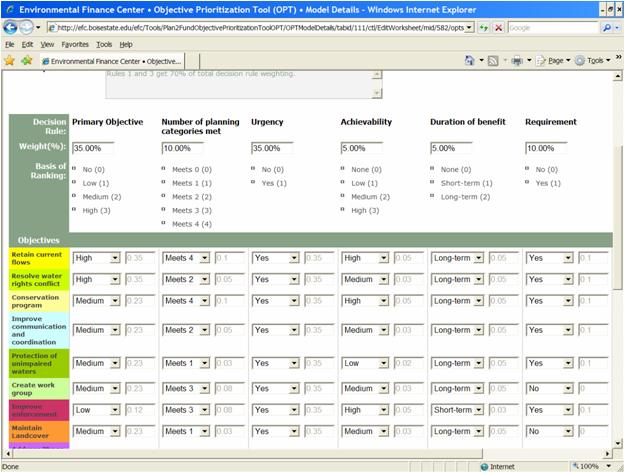Progression Tracker
Do You Need a Funding Plan?
Introduction to the Six Steps
Step 1: Establish Priorities
- Organizational priorities tips & exercise
Step 3: Set Fundraising Goals
Step 4: Identify Funding Sources Step 5: Evaluate & Select Funding Sources
Step 6: Write & Implement Plan
Final Quiz
Sample Finance Plans
List of Case Studies
References & Additional Resources
Step 1 (continued). Priority-Setting Tips and Exercise
Establishing meaningful priorities to guide organizational decisions is a complex process. While it is not possible or appropriate to prescribe a single approach for priority-setting that fits all needs, there are attributes of an effective process that should be considered:
1. Build on existing work. If your organization has already done any evaluation reports or long-term planning, use that work as a baseline. Also, if your organization had set priorities at some point in its past, use those as a starting point.
2. Encourage creative thinking. Challenge your staff, board members, and volunteers to think beyond existing programming, opportunities, partnerships, and funding.
3. Identify points of agreement and disagreement. Use a simple method to have staff members list each of the organization's current or future activities as "highest priority," "lesser priority," or "not sure". Some staff or board members may be reluctant to do this process, but it is important to the discussion to have everyone's points of view on the table.
4. Clarify decision-making roles and expectations. Take time to clarify who should make final decisions on the organization's activities, as well as what is generally expected of board members, staff, and volunteers.
5. Find out what is going on in the rest of your community. Looking at the budgets and activities of other organizations in your community may redefine what is the "unique" role of your organization and how to best move forward.
6. Formally adopt the priorities. Once you have set the priorities, it is a good
idea to adopt them formally. Formal adoption facilitates decisions about the organization's
direction and allows everyone to take ownership of the priorities.
Below is a decision or criteria matrix for priority setting. It compares alternative actions relative to criteria. This technique is applicable for choosing among alternatives that may or may not meet the basic standards or criteria you set.
Directions: Draw a grid with as many rows as there are alternatives and columns as there are criteria. List alternatives along the side and criteria along the top of the grid. Look at each alternative down the side, one at a time, and compare it to each criterion. For an initial screening, a simple checkmark might do the trick. If you are attempting to sort items of relatively equal merit, a rating scale will provide more discrimination.
| Example Priority Setting Matrix Criteria | ||||
| Alternatives | Does the management action protect or restore a high value asset? | Is the management action technically feasible? | How much will it cost? | Is the management action supported by the community? |
|---|---|---|---|---|
| Public outreach campaign | ||||
| Buffer strip planting | ||||
| Water quality monitoring | ||||
Note: A free, web-based tool called Plan2Fund Objective Prioritization Tool (OPT) is now available to make this process more collaborative and transparent. The model can generate comparative reports based on your selection criteria, the scores that you give to your objectives according to those criteria, and the weight that you give each criterion. For more information on Plan2Fund OPT, please click on the additional resources link at the bottom of this page.
Plan2Fund OPT Worksheet

Additional Resources on Priority Setting
Citation: See Resources, Works Cited #3
![[logo] US EPA](https://www.epa.gov/epafiles/images/logo_epaseal.gif)